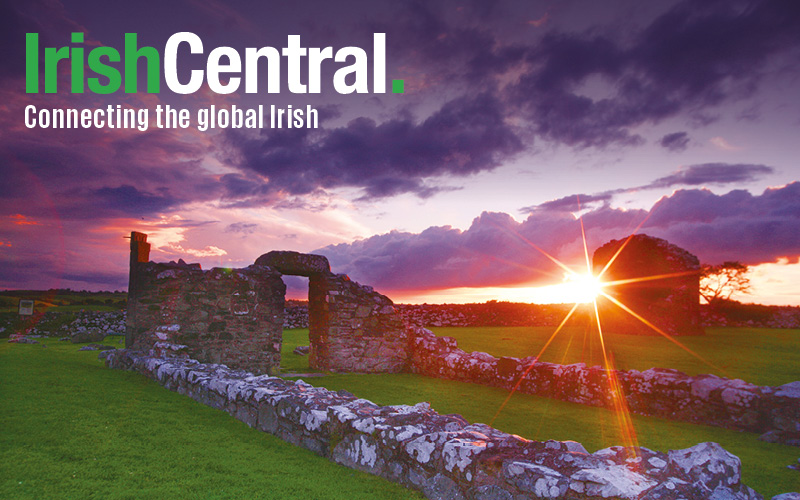From the influence of the Irish culture on American music and place names to our input into U.S politics and decision-making, the Irish have fully integrated themselves into American society since the massive influx of Irish immigrants began in the 18th century. Over the past few hundred years, the Irish have produced U.S. presidents (anywhere between 10 to 22 U.S. presidents could be claimed as Irish), American sports stars and top influential players in all industries.
This makes it hard to imagine an America without Irish involvement, without the massive section of American society that claim Irish heritage and without the influence of the small country just across the Atlantic. How would America differ if the Irish had not made (or been forced to make) the treacherous journey across the ocean to relocate and settle in the Land of Opportunity.
A massive 34.1 million Americans claim Irish heritage – just over 10% of the population – second only to the number of Americans who claim German heritage. FiveThirtyEight, the polling aggregation website and blog, has taken this claim and tried it against their own data taken from census records. Looking through 150 years of census records and the numbers of Irish people who emigrated to America each year, they calculated that 27.6 million Americans should be able to claim Irish heritage. Although this figure is almost 7 million less than those that do, it is still a staggering one in 11 Americans. Of course, it should also be taken into consideration that Irish families tended to be larger than average and so this extra seven million may have been a result of the tendency of Irish families to have more children than others.
If any of these immigrants was older and not likely to have any children or if they eventually returned to Ireland, which it was assumed they didn’t, then this would again lead to a decrease to the 27.6 million.
If we take this data into account when imaging an Irish-less America, it results in a country with a population of 27.6 million less. That’s taking away the four states of Rhode Island, New Mexico, South Carolina and New York!
Of those 34.1 million people, many maintain a strong link or at least a knowledge of how they are connected to Ireland. In a survey of the American population (that showed 12% claiming Irish heritage, in line with the Census data), 423 out of the 430 people claiming some kind of Irish heritage (no matter how small) were able to place a fraction or a percentage on this part of their background.
The question of whether people considered themselves Irish American or not was a tricky one, however. Even among those who considered themselves more than half Irish, only 78% would describe themselves as "Irish-American" and the majority of those with less than a quarter of Irish heritage didn’t consider themselves Irish-American at all. There is no specific calculation for when people generally consider themselves Irish-American and it remains up to the person's own beliefs.
The impact of this part of the population on how America runs may not be as influential as it once was, but it can still play a role in events right up to the White House itself (which was designed by an Irishman, James Hoban). The need to show off this part of your heritage is the reason why Barack Obama hosts his eighth cousins in the White House on St. Patrick’s Day. How many other people know who their eighth cousins are? A far cry from the (technically) most Irish of presidents, Andrew Jackson, whose parents were both Irish-born.
Often tagged as the U.S’s first ethnic group, the Irish were also instrumental in the development of the character of American city life, according to James Barrett. In his book “The Irish Way,” Barrett speaks about how the rural Irish became the urban Irish in America, developing Irish-only neighborhoods as they grouped together and established networks among themselves. In time, he says, it was often the Irish who took the lead in developing an inter-ethnic city culture with Irish working class activists bridging the divide between richer elite reformers and the normal immigrant seeking change.
Another interesting question is how would the Irish population look if it wasn’t for America?
Without the promise of freedom, of adventure and of riches in the new land, what would have happened to the Irish population. If it’s taken by physical numbers of people, FiveThirtyEight reports that by relocating those 27.6 million claiming Irish heritage to Ireland itself would increase the people per square mile in the country from 213 to 850. That’s a lot more bodies in Leitrim.
Again FiveThirtyEight says that this may not be accurate. As the Irish fled their homeland to escape hunger, poverty and disease, if they hadn’t boarded coffin ships to the States (or fled in the opposite direction to England), those who remained may have added to the one million people who lost their lives during the Famine and so reducing this increase in our parallel universe Ireland’s population.
In what ways do you think the Irish have shaped America? Leave your thoughts in the comments section below.




Comments